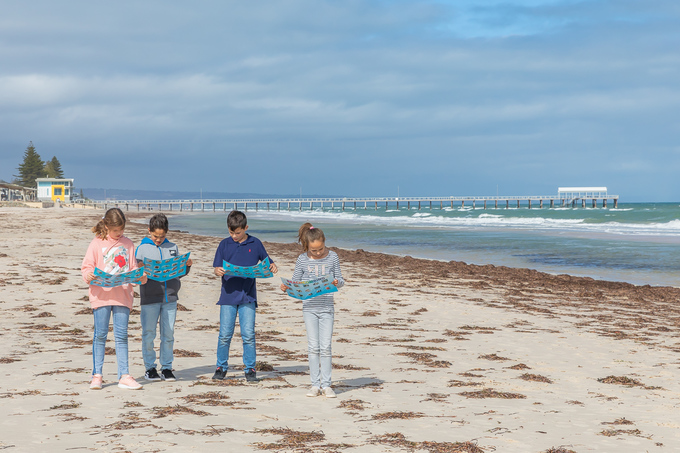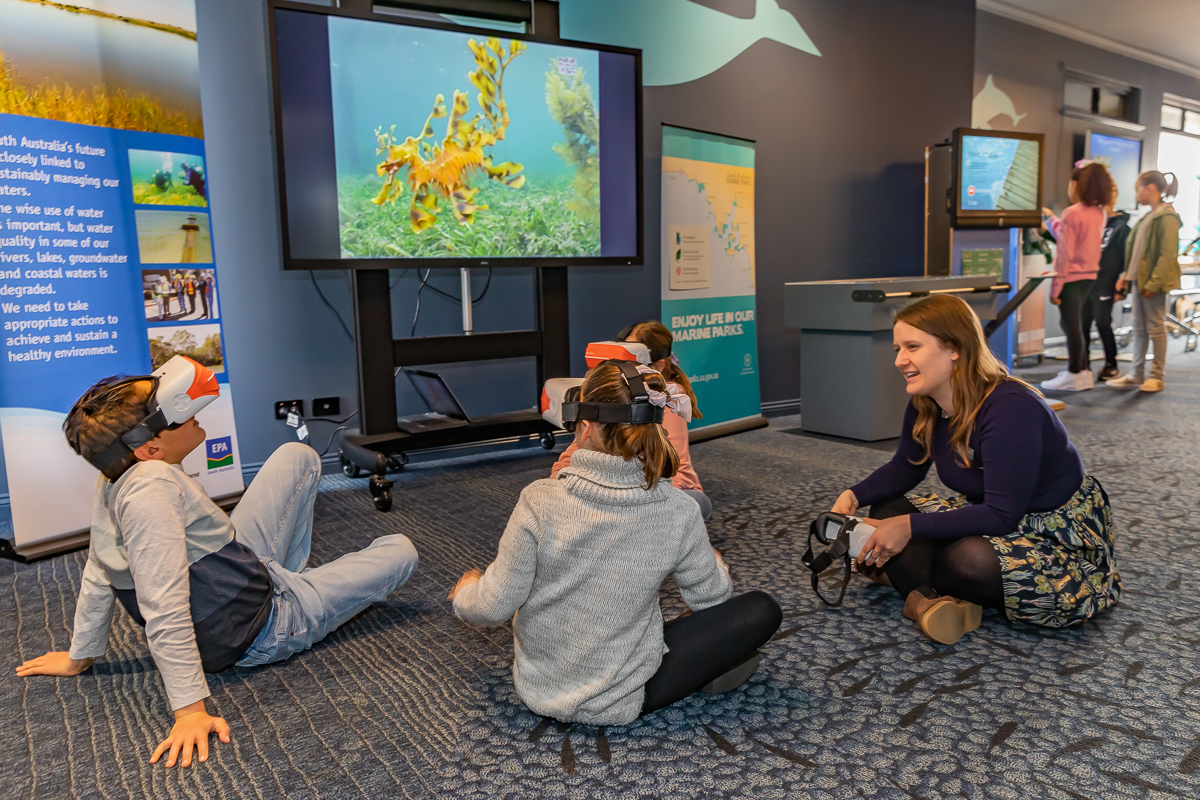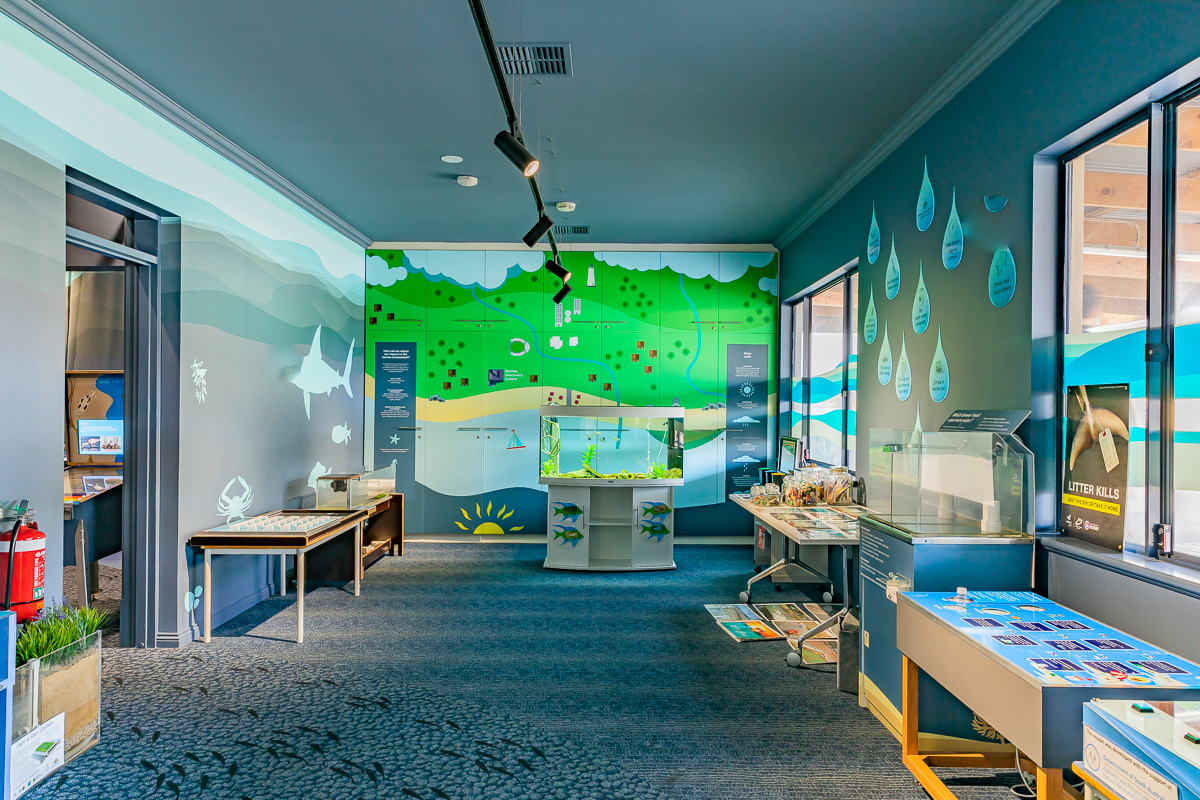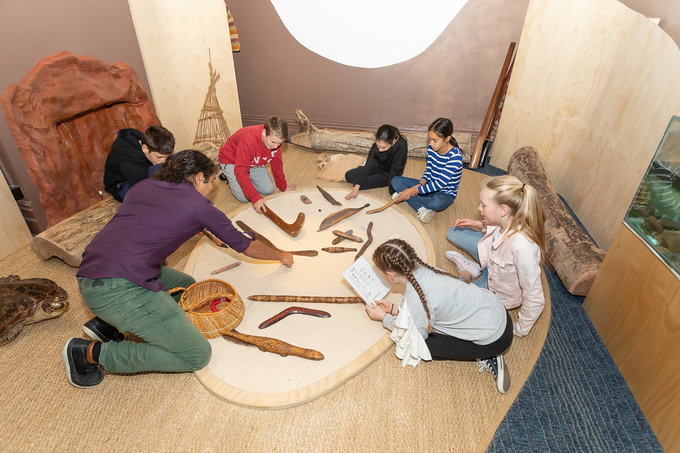The excursion is for an entire day from 9.45am – 2pm, times can be changed to suit your group
Timetable
9.45am Arrival and introduction
10.20am Recess Break
10.40am Marine Discovery Trail
12 noon Lunch
12.30pm Marine Centre Station Activities (4 groups)
2pm Depart
Numbers: from 20 to 60 (please contact us if your numbers are outside of these parameters to discuss options)
Cost: $15 per student (plus GST)
OSHC/Vacation Care available during school holidays
Supervising adults free of charge
All inclusive


The marine trail is the focus for the Marine Discovery Centre excursions, as students and adults can become engaged and learn so much more when they get hands-on with the marine and coastal environment.
Depending on the age group and focus of our visiting classes, we can base our marine trail on:
Common objects found on Henley Beach during the Marine Trail include cuttlebones, fibre balls, crab shells, sand cockles, sausage jelly, angels wings, sea sponges and so much more.
The Beach Discovery room hosts a range of activities and is our main room that can also host the whole class group.
Interactive models in the Beach Discovery room include but are not limited to:
The Virtual Reality Headsets are the highlight for visitors. Students can explore the Great Southern Reef without getting wet. Our virtual reality content include 15 different species, from mega fauna to endemic species only found in Southern Australia. Video content was filmed by Carl Charter, thanks to funding support from Inspiring South Australia.
The Marine Habitat Model allows visitors to explore 3 different habitats including the rocky shore, the sandy shore and the intertidal zone between low tide and high tide.
Microscopes give visitors the opportunity to look at specimens up close.
The collection of specimen samples and whale bones invite students to compare marine creatures both great and small.
A wide variety of shells, plants and animal specimens provides the chance to continue beachcombing discovery, and investigate the characteristics and features shared by different groups of animals.

We have a strong educational component that empowers and educates our visitors with their understanding of sustainability and the part they can play in looking after and preserving our environment.
We have a room dedicated to Catchment to Coast education, with interactive models that have been created for the Marine Discovery Centre to demonstrate how land processes are connected to the marine environment. These models include:
The Oceanography model shows the importance of seagrass, sea beds and beach management concepts, demonstrating the importance of coastal management and its association with climate change.
The Climate Change interactive model challenges the user to discover better behaviours to reduce climate change, along with panels visually showing what would happen if we have .75m or 2m rise in sea-level.
The Marine Debris interactive model gives the user choices to make about disposing a plastic bottle and what happens on its journey depending on the choices made.
The Stormwater and Litter model highlights stormwater and littering issues, promoting a better understanding of pollution and how to make better choices in day to day life.
The From Catchment to Coast model shows steps to reduce our impact on the marine environment, the model shows pollution going down the river and stormwater into our oceans and how to make the correct choices.
The Wetlands Board Game is a game including catchment management, biodiversity and ecosystem restoration where players are made aware of they can themselves do inside and outside of the home to play a part in their preservation.
The Climate Change model promotes a better understanding of climate change. The interactive model allows the student to both see and feel that climate change is the heating of the earth caused by increasing levels of Greenhouse gases in the earth’s atmosphere.
The Rain Garden model shows how specifically chosen plants and layers of selected soil filter out and absorb pollution as the stormwater soaks down. The clean stormwater flows out of the bottom of the rain garden and into the local creek or drain that leads to the coast.

Our aquarium room features many temperate marine species that can be found on our doorstep here in South Australia and are endemic to the Great Southern Reef. Our Marine tanks give visiting students the chance to get up close and personal with both local temperate fish species and tropical species for students to compare temperate and tropical marine species, while fish and yabbies in our freshwater tanks reinforce the need to keep both our rivers and oceans clean.
There are also a couple of interactive models in the Marine room which include but are not limited to:
The “Sustainable Fishing in SA” Interactive Model enables MDC visitors to learn about the species of fish caught in our local waters, and their specific bag limits. Once they catch the fish. They can then measure it on our fish measuring station and decide whether it is legal size or should be returned to the ocean to grow.


In late 2018, The Wodli (Kaurna Learning Station), was developed as an interactive room which highlights the relationship that Kaurna people have with the Adelaide Plains and the coast. It includes significant, relevant information that reflects the deep relationship Kaurna people have with the land and coast. It features rules for living and Dreaming Story reflections e.g. Tjilbruke, and importantly, increased respect for our native flora and fauna and coastal wildlife will result. We currently employ a cultural educator who shares his perspective passed on from his uncle, and Marine Discovery Centre patron, Karl Telfer.



During the recess and lunch breaks, our visitors have free time on our Nature Play playground.
Nature Play is a part of our culture where students have the opportunity to explore, construct and play with natural objects – logs, beach sand, rocks, water play etc in our natural play area.
Nature Play enables our visitors to use their imagination and creativity, to tinker, play in the mud kitchen, create cubbies and explore water. This fosters a connection with Creation and awareness of how to manage and take care of our natural world and how and when to take measured risks in play.